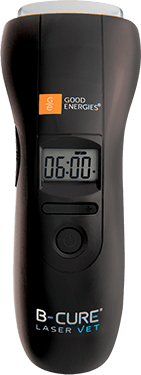Facial Nerve Paralysis
Facial paralysis is quite common in dogs, particularly in middle to old-age. The term is simply the description of drooping of muscles in the face, which is caused, not by damage to the muscles themselves, but to the nerves supplying them.
A dog with facial paralysis has a dropped appearance to the face on one side (a bit like a person that has suffered a stroke). One ear is held lower than the other and the lip hangs down on the affected side. Affected dogs are unable to blink and have a tendency to dribble saliva and drop food from the side of the mouth. Occasionally, the same signs may be present on both sides of the face which can make the changes difficult to recognize.
What causes facial paralysis in dogs?
Sudden development of facial paralysis is a common presentation of stroke in man. However, in most cases, facial paralysis in dogs is not associated with disease of the brain, but rather with direct damage to the nerve that controls the muscles in the face (facial nerve). This nerve comes from the back of the brain to control the muscles of facial expression (ears, lips, eyelids and nostril).The most common cause of facial nerve paralysis in dogs is idiopathic facial nerve paralysis. The term idiopathic means that there is no known cause. Therefore, in idiopathic disease all the tests results will be normal. A similar condition is recognised in human medicine as Bell’s Palsy.The second most common cause of facial nerve paralysis is a deep-seated infection of the ear (otitis media/interna). In this case, other signs such as Horner’s syndrome (decreased pupil size and third eyelid coming across the eye) and/or vestibular syndrome (head tilted to one side, and balance loss) (see related fact sheet) are frequently seen in addition to facial paralysis. Rarely, facial paralysis in dogs can be associated with disease affecting multiple nerves (polyneuropathy) or brain disease (tumour, infection or inflammation). In these cases, other veterinary neurological signs are usually observed in addition to facial paralysis.
Treatment
Trauma is a common cause of facial paralysis in all species. In horses, halter injuries and prolonged lateral recumbency may injure the buccal branches of the facial nerve on the side of the jaw and cause unilateral or bilateral paresis or paralysis of the lips and nostrils.
Therapy for injury may include massage and heat of denervated muscles for 15 min, 2−3 times/day, to maintain their integrity while awaiting any nerve regeneration. Laser therapy, also known as cold laser, low level light therapy, or photobiomodulation, can help nerve regeneration. The facial nerve can regenerate ~1–4 mm/day, so serial neurologic examinations can also help determine the prognosis. If there has been no improvement after 6 mo, the chance of recovery is poor. Horses with collapsing nostrils may require corrective surgery. Species that need the lips for drinking and prehending food must be given deep water containers and wet bulky mashes.
B-Cure Laser Vet provides breakthrough laser therapy, offering the power of professional lasers as used in clinics, in a lightweight portable device that can be used from the comfort of home.
No medications are required, the treatment is safe and effective.
B-Cure Laser’s restorative power is provided by advanced laser technology.
B-Cure Laser is placed in contact with the skin, allowing the photon energy to penetrate the tissues. This stimulates the body to produce adenosine triphosphate otherwise known as ATP, which carries energy within the cells. The ATP interacts with various biomolecules inside the cells, promoting normal cell function and enhancing the body’s natural healing processes.
Therapeutic effects of LLLT (laser phototherapy) include:
- Increased production of ATP (Adenosine Triphosphate)
- Increased cellular metabolism
- Increased collagen production
- Increased enzyme production
- Increased protein synthesis
- Improved blood circulation
- Improved lymphatic flow and drainage
- Reduced inflammation
All this serves to boost the body’s natural healing power, targeting the root causes of pain and providing rapid relief.
B-Cure Laser Vet is unique with a beam that covers a surface of 4.5 cm, making it possible to treat a wide range of painful conditions easily, effectively and quickly.
B-Cure Laser Vet is now available for home use and has been proven clinically effective and safe. The treatment has no known side effects and is a natural and non-invasive method for treating many types of orthopedic conditions.
B-Cure Laser Vet is safe for all ages, does not harm the eyes, and there is no need for protective eyewear during use.
What Are the Benefits of B-Cure Laser Vet?
- Accelerates healing and reduces chronic pain
- Reduces pain, inflammation and the consumption of drug therapy
- Non-invasive and non-surgical treatment
- No side effects
- Clinically proven
- Easy and safe for home use




